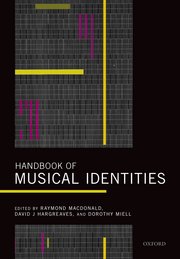Today is Mother’s Day. As we stated this time last year, that’s reason enough to celebrate some connections between music, mothers, and their children.
Mothers begin their connections to their unborn child while pregnant. Notably, by the last trimester an unborn child has fully functioning hearing. Not only can unborn children recognize a mother’s voice, they can differentiate this voice from any other. As Ruth Fridman explains, singing to an unborn child establishes “a prenatal bond which contains tenderness on the part of the parents to be, a promise of protection, and the wish to see and hold the baby in their arms . . . It is of great significance for babies to hear music . . . during the gestation period. The mother’s emotional expressions benefit both herself and her baby.”
Moreover, parents and other adult caregivers are predisposed to interact with their infants by means of emotionally charged proto-musical vocalizations, or “motherese” (sometimes called baby talk, parentese, and so on). Motherese combines variations of pitch (melodic-type contours), timbre, rhythm, and accents that are the sonic building blocks of more sophisticated adult singing (such as lullabies). Because humans acquire the ability to distinguish changes in pitch and loudness in utero, it’s not surprising that infants learn to match some proto-musical elements after repeated parent-infant interactions.
Caregivers use motherese for all sorts of reasons: to comfort, arouse, communicate, and play in caring and loving ways with and for their pre-linguistic infants. The musical-affective characteristics of adult-infant interactions establish and strengthen emotional bonds between caregivers and infants. Motherese also includes proto-musical play, and proto-musical play gives infants a way of engaging in and acquiring the foundations of social competence and confidence in a safe, risk-free, enjoyable, and participatory context that is fundamental to the development of their social cognition and “domain-general cultural competence.” If such emotional bonding or “primary intersubjectivity” fails to occur via early motherese and proto-musical interactions, infants may suffer.
The values of motherese–both before child’s birth and after–are clear. In a highly social species like ours, an infant’s chances of surviving depend on “fitness” beyond physical fitness, namely, “cultural fitness” and social-emotional fitness. These qualities follow from parent-infant bonding and primary intersubjectivity and anchor an individual’s ability to interact cooperatively with others and contribute to group cohesion.
Lullabies Matter
There are numerous projects world-wide that cherish the early relationships mothers create with their unborn children.
For example, in a women’s prison near Oporto, Portugal, early childhood music specialists help incarcerated mothers learn lullabies they can sing to their infants to promote mother-infant bonding.
Additionally, meet “The Lullaby Project.” According to Carnegie Hall:
The Lullaby Project pairs pregnant women and new mothers with professional artists to write and sing personal lullabies for their babies, supporting maternal health, aiding child development, and strengthening the bond between parent and child. In New York City, the project reaches mothers in hospitals, homeless shelters, schools, and at Rikers Island Correctional Facility. Extending across the country and through several international pilot programs, the Lullaby Project enables partner organizations to support families in their own communities.
